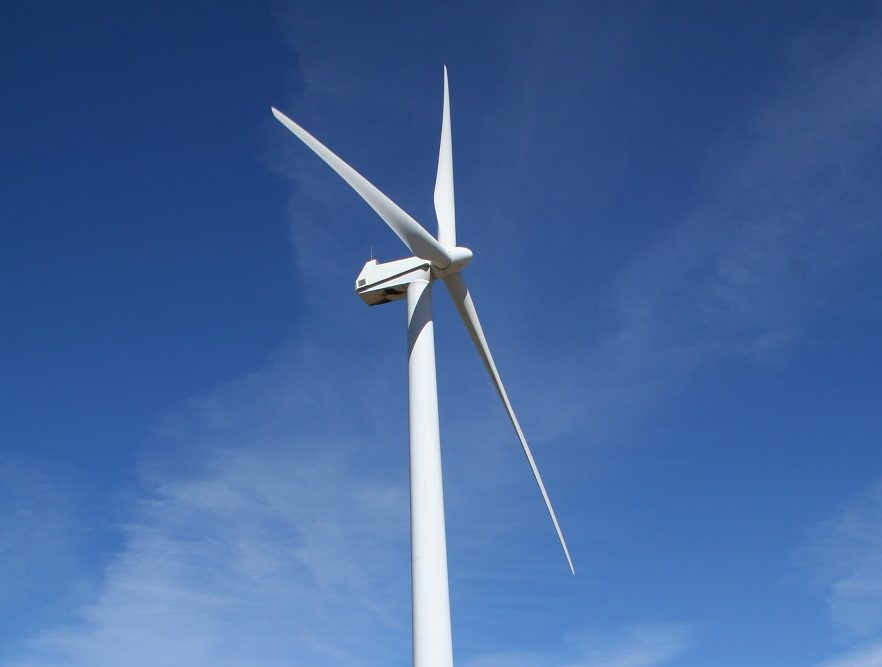Repowering the Future: Data-Driven Wind Farms
Condition monitoring vital to future proof components and equipment in wind applications

In the first three months of 2023, wind power generated more than a third of the UK’s electricity, overtaking oil and gas as the country’s main source of energy for the first time. In the United States, current estimates suggest that installed wind capacity could power up to 46.7 million homes, approximately a third of all households in the country. Such figures have emerged as investment in both onshore and offshore wind projects rises, and the global race toward net-zero targets begins to pick up pace.
However, there is growing financial risk to maintaining operational wind turbines. The average lifespan of a wind turbine is around 20 years and as components within turbines begin to approach the end of their lifecycle, performance can decline resulting in reduced productivity. Meanwhile, recent reports have highlighted that new, larger capacity machines could lead to a rise in component failures and mechanical breakdown issues as manufacturers push to develop bigger turbines, faster.
Deployment of predictive maintenance strategies can deliver significant benefits to new and existing wind farms. Condition monitoring systems (CMS) in particular play a role in tracking asset performance to drive data–based decision-making, meaning operators can future proof their turbines.
Repowering, both partial and full, is increasingly considered as a key element of effective operations and maintenance (O&M) strategies, with a focus on extending turbine lifespan while maximizing productivity.
Component Maintenance
Turbines are subjected to harsh environmental conditions; therefore, it is not uncommon for the components most exposed to the elements to require regular refurbishment or replacement. Repowering can therefore be used as a method to boost windfarm performance, or to address issues with impaired components due to high usage or unexpected damage.
Full repowering involves the complete dismantling of an old wind farm and replacing nearly all turbine components with new ones. Partial repowering involves replacing only some or multiple components while keeping others like the substation, distribution lines, foundations, and usually the towers, in place. This is often completed to improve the capacity factor of the wind farm by installing a larger rotor that can generate more energy over a wider range of wind speeds, thus increasing the project efficiency and overall greater generation.
When approaching any form of repowering, accurate data and realistic expectations are critical to decision-making.
Regional Disparities
The uptake of repowering contrasts regionally and current government policy also plays a role in owners’ decisions to invest in repower activity. In the United States for example, there has been a significant increase as companies seek to take advantage of the production tax credits (PTC) that the recent Inflation Reduction Act (IRA) offers. The IRA was passed in 2022 and crucially, it extended PTC for wind energy projects providing certainty for companies looking to invest in wind energy projects by offering assurance they can take advantage of the credit for a longer period.
In stark contrast, in European wind markets where assets are often more mature, full repowering is less common. Owners tend to continue operating their wind farms with minimal additional investment as long as power production is continuing, rather than spend significant capital on life extension procedures. However, with many European onshore wind farms reaching the end of operational life in the coming years, this approach is likely to change.
It was recently announced that one of the oldest onshore wind farms in Britain, Hagshaw Hill, is set to undertake a full-scale repowering that is due for completion in early 2025. The process will see the number of turbines required by the farm reduced by more than 45 percent, while enhancing its green electricity output by more than five times. The project is set to expand the UK’s renewable energy capacity in a clear example of how repowering can support energy demands.
CMS Adoption for Effective Decision-Making
As operators endeavor to maintain high productivity, there is a growing need for data-driven monitoring as part of an ongoing maintenance program. With more than 58 percent of windfarm operational expenditure attributed to operation and maintenance costs, 65 percent of which being unplanned, this is a crucial area for improvement.
Condition Monitoring Systems (CMS), such as ONYX Insight’s ecoCMS, are increasingly critical in optimizing full and partial repowering projects amidst these wider programs. Many existing strategies to maximize turbine life and output are challenging to optimize however, for full repowering, CMS can help owners understand the current state of their components and make financial decisions without relying on future-gazing simulations, which can often underestimate the remaining useful life.
Similarly, for partial repowering, the CMS can clarify the condition of components. Owners are therefore empowered with accurate data that enables them to make informed decisions to determine which repairs are needed in advance. This can prevent owners from paying for costly upgrades, such as foundation retrofits, on a sitewide basis and allows them to focus on only addressing needed improvements.
Even in situations outside of repowering, condition-based maintenance can be a valuable tool in avoiding the replacement and servicing of components on a predetermined schedule that does not consider whether components are performing better than would otherwise be anticipated.
Optimizing Turbine Performance
Increasing demand for renewable energy production means margins for failure within windfarms today are steadily decreasing. Repowering is emerging as a long-term cost-effective approach to maintenance that optimizes turbine performance throughout component lifespan, thus reducing financial strain for operators.
Both partial and full repowering projects can be supported by applying appropriate condition monitoring systems which avoid unnecessary expenditure on nonessential component replacement. This ultimately provides a clearer assessment of asset health visibility, enabling data-driven decision-making.
-(1).png?height=300&t=1695916739)





